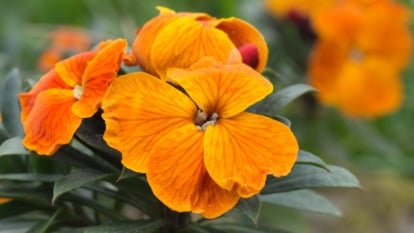A wildflower is truly wild. These plants are Oregon native species that thrive in wild landscapes without human intervention. As native plants become increasingly popular, many are available in nurseries and online seed banks.
In Oregon, wildflowers dominate grasslands, woodlands, meadows, and the coastline. Because Oregon has a wide range of ecosystems, many different wildflowers adapt to the unique climates and conditions found in these different areas.
With a wide range of ecosystems comes a huge selection of wildflowers for the garden. These native flowers are just as pretty as non-native garden plants, and they offer more benefits to local wildlife than plants from other areas. Plant these wildflowers today and enjoy native blooms for decades to come!
Camas
Camas are the iconic Pacific Northwest bulbing plants that pocket meadows and grasslands. Coast Salish groups, Blackfoot, Cree, and Nez Perce tribes cultivated this plant on the West Coast. They grew this edible bulb as an agricultural food staple and spread it throughout the state.
Nowadays camas do not have as wide of a native range as they once did, but gardeners are slowly falling back in love with them. Their bulbs sprout daffodil-like leaves, and tall flower spikes of purple, blue, and white.
Plant camas bulbs in fall or winter before they sprout. They appreciate Full sun and regular water, which they receive plenty of in their native meadow habitats. They are easily confused with the poisonous death camas, and their numbers are declining, so I do not advise collecting them from the wild.
Toughleaf Iris
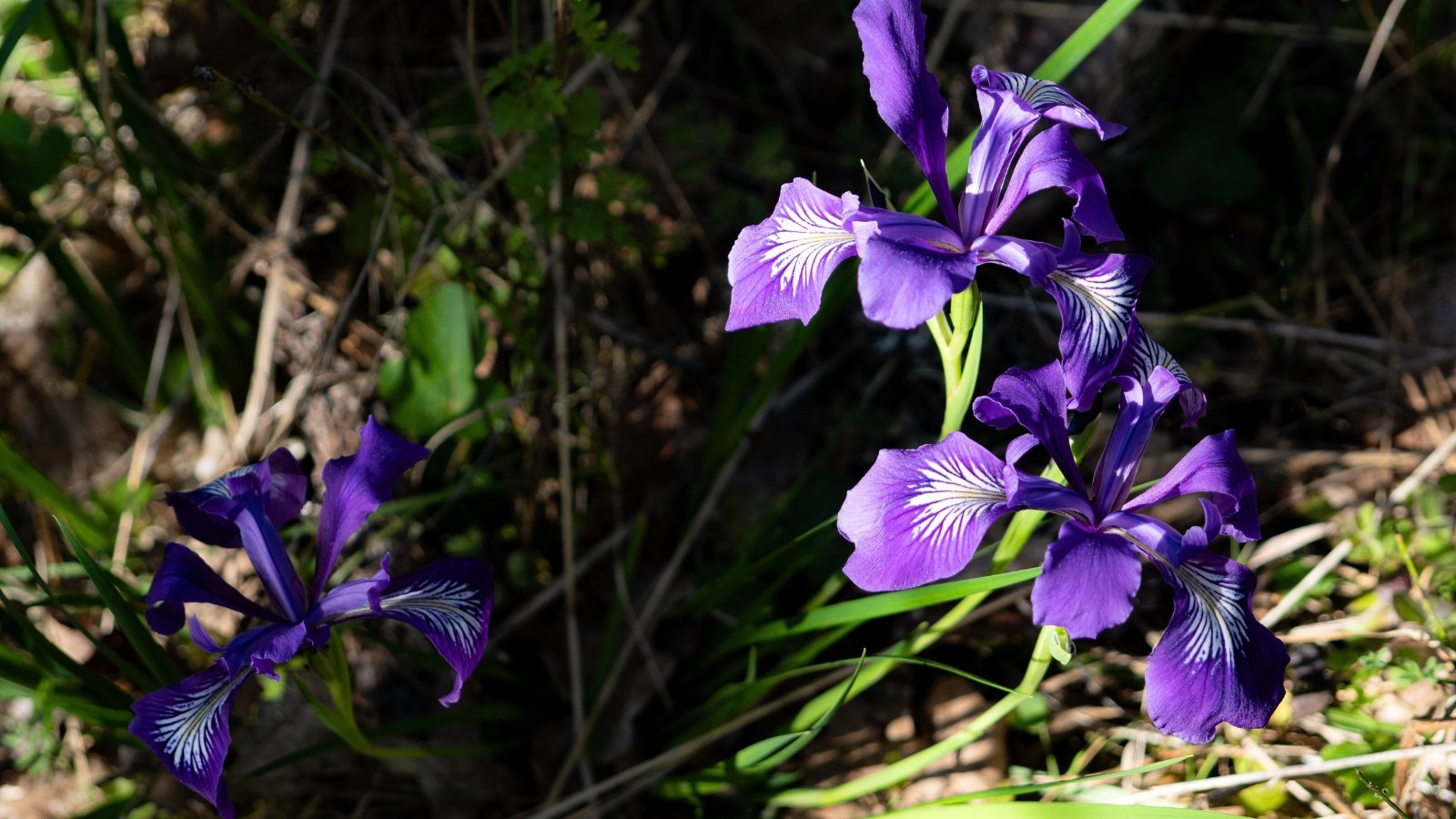
Another meadow lover, toughleaf iris is the perfect native plant to grow alongside camas. It prefers full sun and ample water during the growing season, and it rewards you with dark purple flowers on short, tubular stems.
This iris is the most common in Oregon, and it grows in open and sunny locales from Washington to northern California. Plant one in well-drained loamy soil with regular water, and it will reward you with clusters of lavender flowers with white and yellow throats.
Find this iris labeled as Iris tenax at native plant nurseries and online retailers. Transplants are quicker to flower; however, seed-grown plants typically fare better in the landscape over time. Sow seeds in fall in full sun, cover them lightly with soil, and wait until the spring for them to sprout.
Lewisia
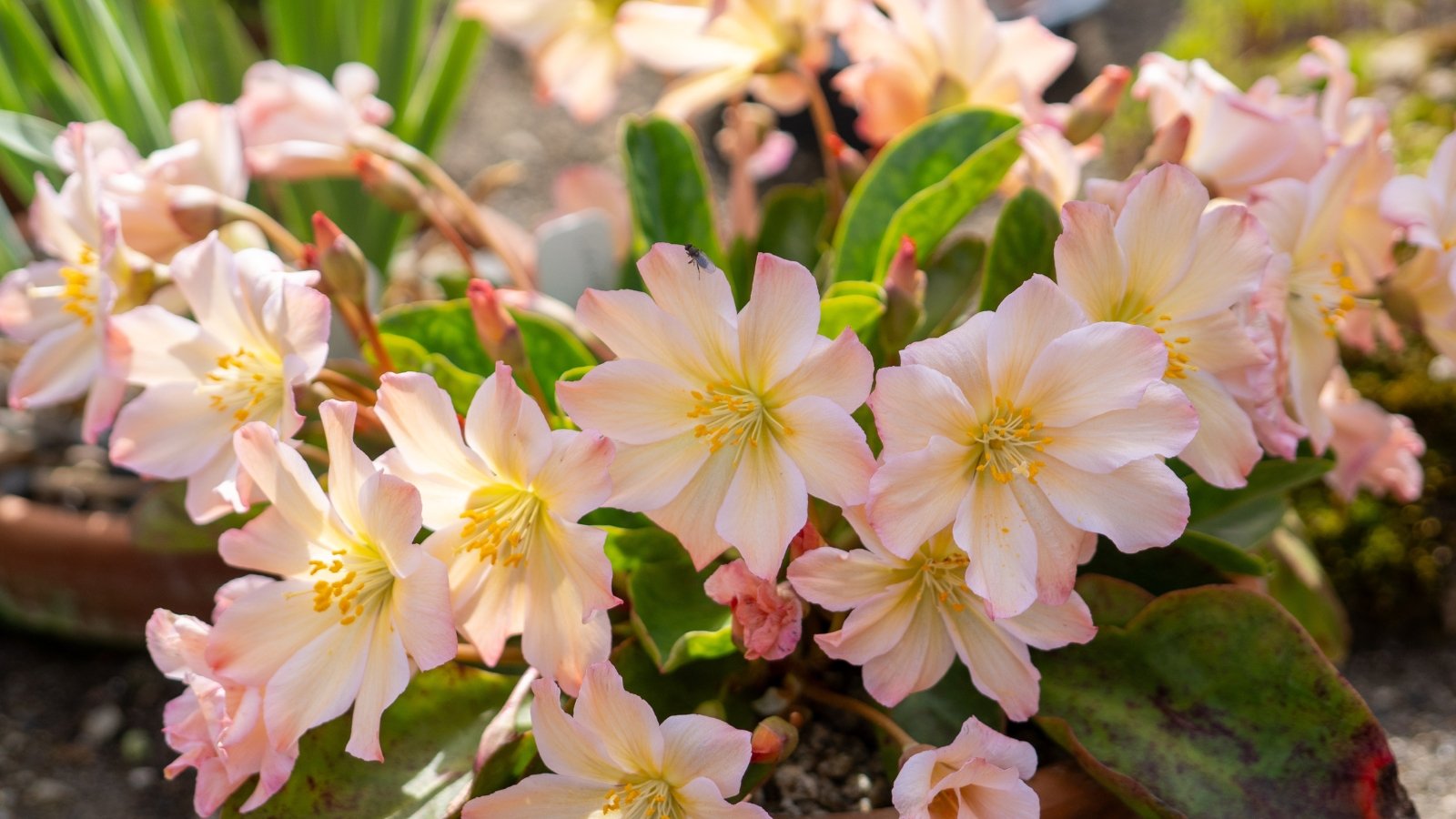
Lewisia plants delight gardeners and botanists alike for their hardiness, beautiful flower colors, and unique habitats. Most lewisias sprout succulent green leaves and perfect flowers that range from hot pink to orange creamsicle.
A few different species are native to Oregon. Gardeners in wet, valley locales should try Siskiyou lewisia and its varietals, as this type adapts readily to garden conditions. For gardeners in alpine or rock-garden conditions, Columbian or Tweedy’s lewisia are two challenging lewisias I recommend growing.
To grow lewisia from seed, cast seed on well-draining soil in fall. Let the seeds overwinter and experience cold stratification, and in spring, they should sprout into baby lewisia plants. Water them once their soil dries completely.
Showy Milkweed
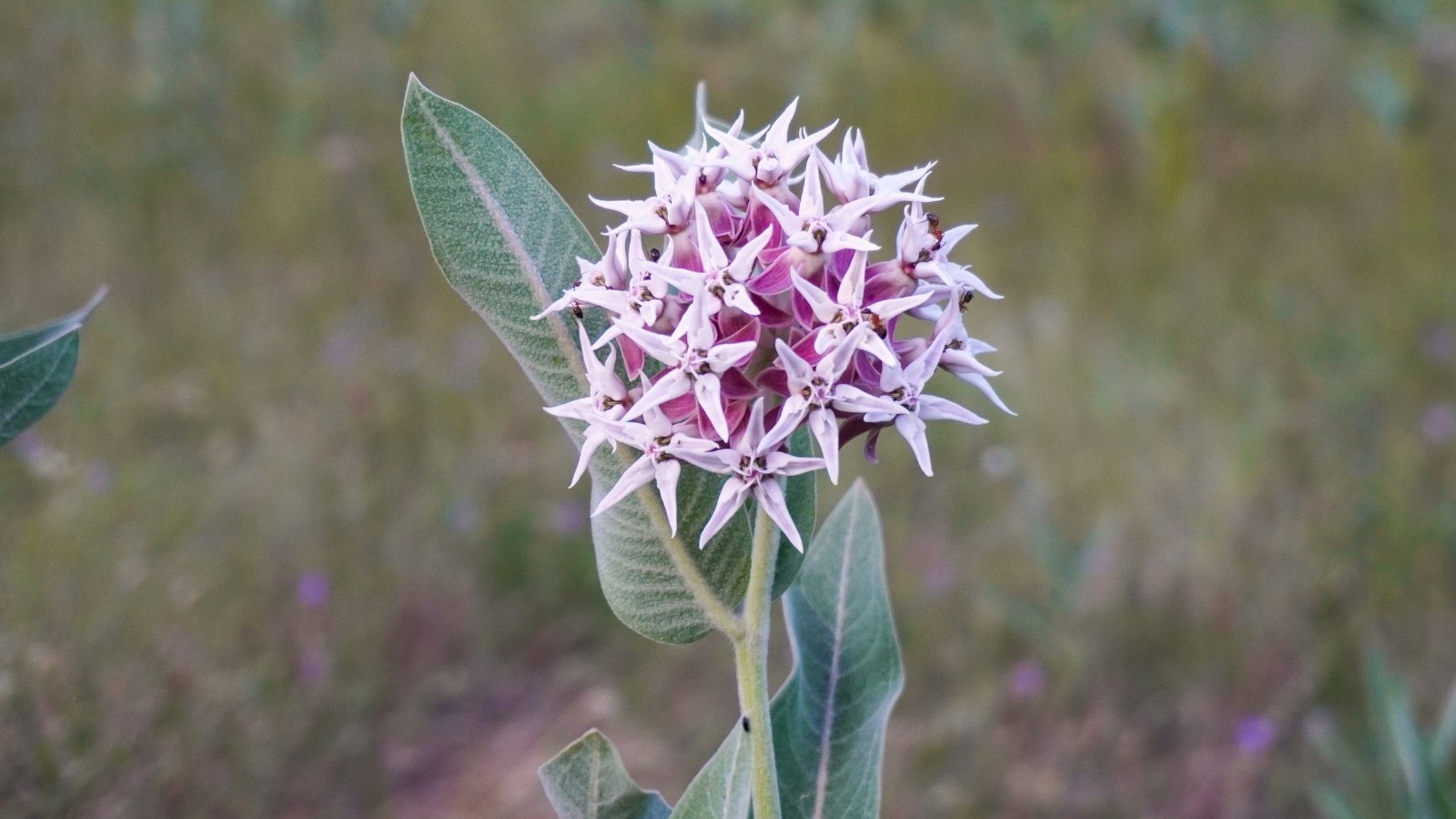
As the name suggests, this milkweed’s appearance is incredibly showy! It has long, green stems and big bunches of pink-white star-shaped flowers. As a garden ornamental, it tolerates a wide array of conditions and readily adapts to most soils.
This native wildflower has a perennial life cycle, and it dies back in fall. Let it grow on its own and it’ll spread seeds to new areas. Be sure to plant more than one though, as two separate showy milkweed plants are necessary for optimal cross-pollination.
To grow showy milkweed, first gather either rhizomes or seeds. Plant both in fall and let them overwinter in the soil. In springtime, they’ll sprout seedlings and mature into beautiful showy milkweed plants.
Douglas Iris
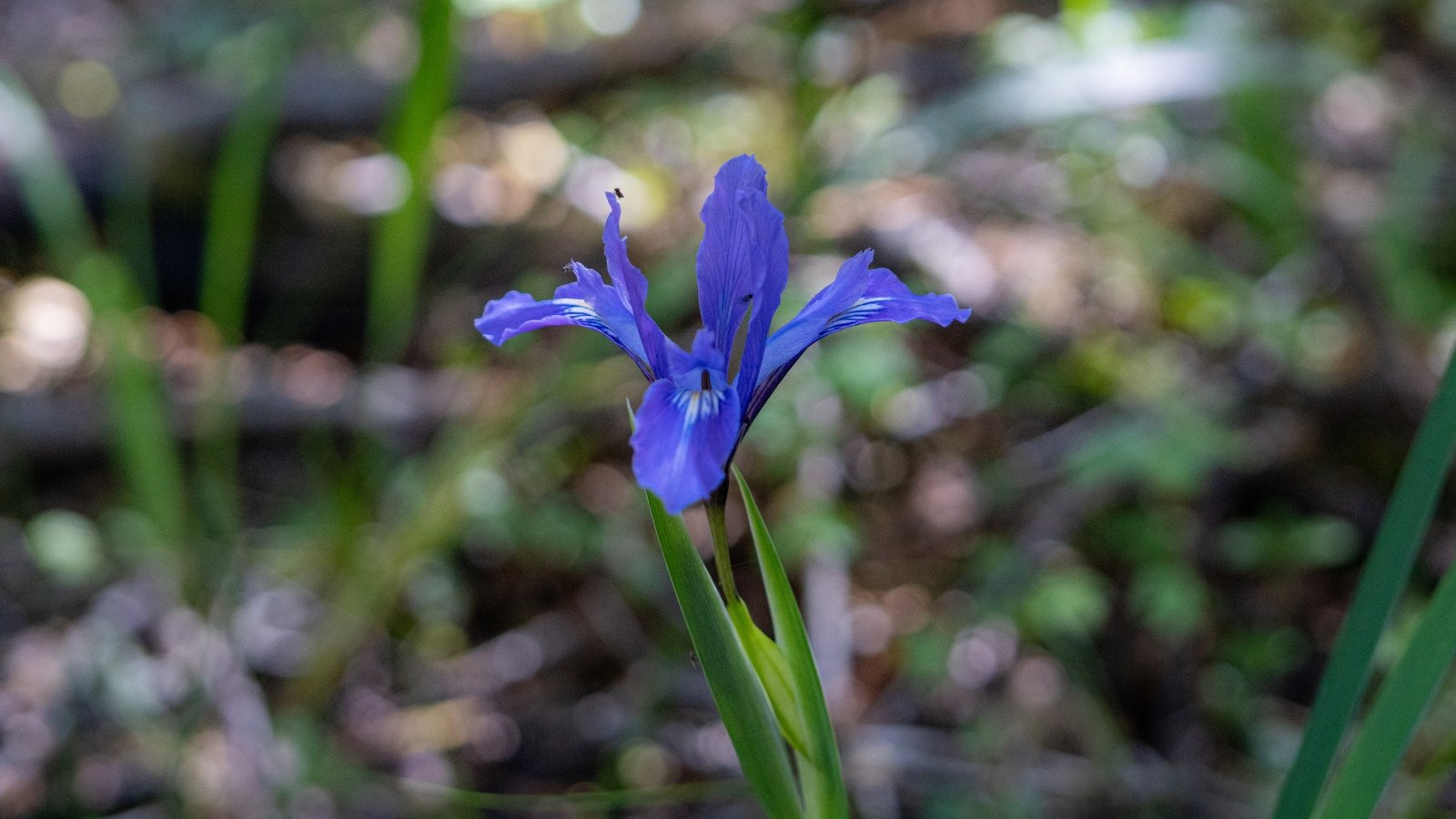
You can’t mention toughleaf iris without mentioning Douglas iris! With longer stems and creamier flowers, this iris performs better than toughleaf iris in woodlands, shaded meadows, and open forests.
Douglas iris appreciates partial shade, average amounts of moisture, and well-draining soil. It performs well with evergreen huckleberry, fawn lilies, and trillium. When you mix this iris with these other perennials and shrubs, your garden will resemble the wild forests of the Pacific Northwest.
Grow Douglas iris from seed. Sow seeds in fall and cover them lightly with soil. Ensure they’re moist, and let them cold-stratify outside over the winter. In spring, they’ll grow into stately clumps, and they may flower their first year with the proper conditions.
Fairy Slipper Orchid
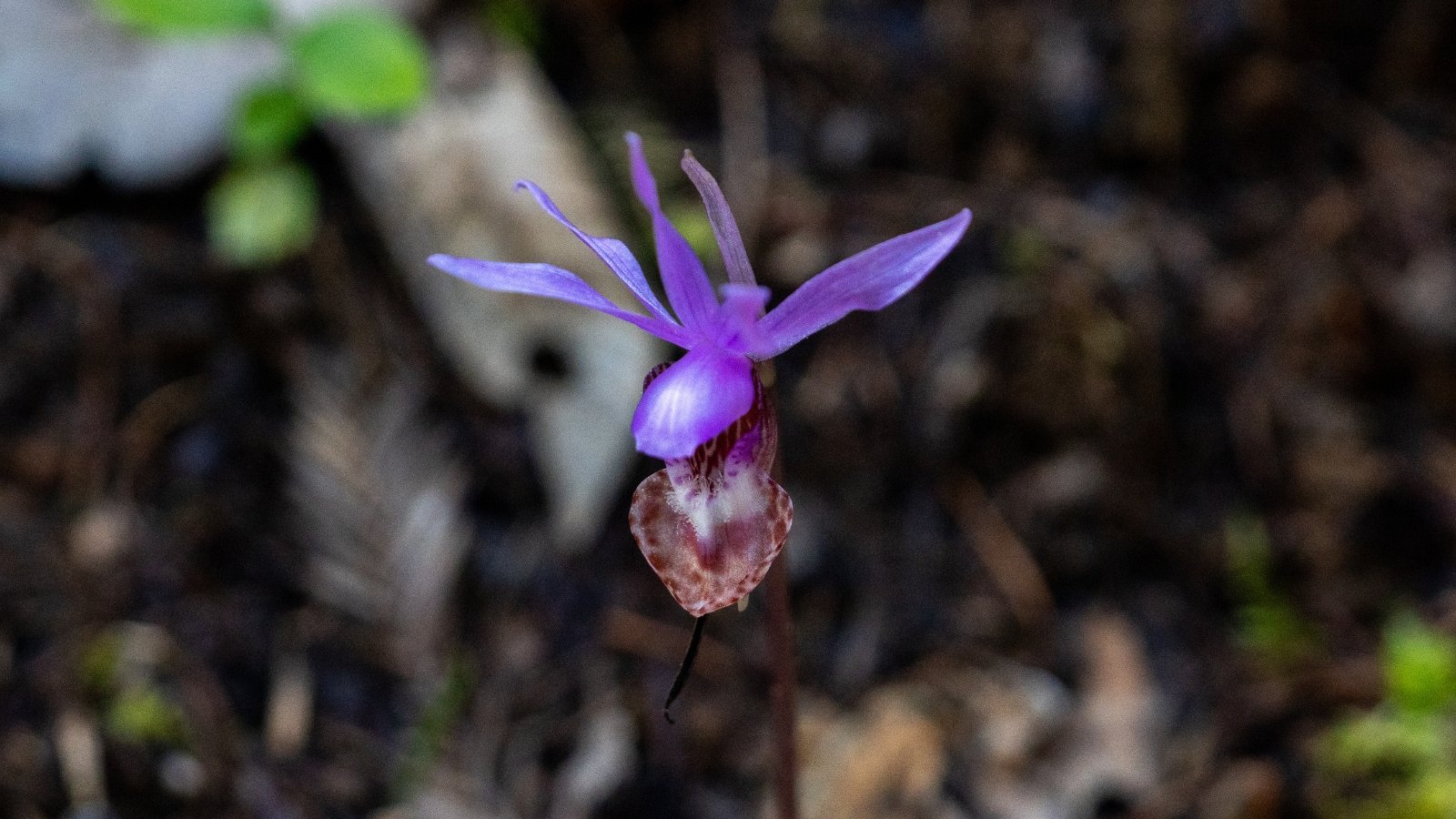
A true treat to look at, fairy slippers are becoming increasingly rare in the wild. They are one of the few orchids native to Oregon! This is the only plant on this list I don’t generally recommend for the garden, as it is also challenging to propagate. To see it, visit a mixed forest on the West Coast with deciduous and evergreen trees.
Fairy slipper orchids have flowers that are pink and divided on top, with a white and yellow spotted lip below the pink petals. Although they grow low to the ground, they have an incredibly sweet fragrance. Fairy slippers only have one leaf—it dies in summer and regrows in fall, persisting throughout the winter.
This ground orchid relies on underground fungal networks that connect to its small roots. It does not transplant well, and its seeds are notoriously difficult to propagate. To see one in person, try visiting their native range in early spring during their bloom time.
Fawn Lilies
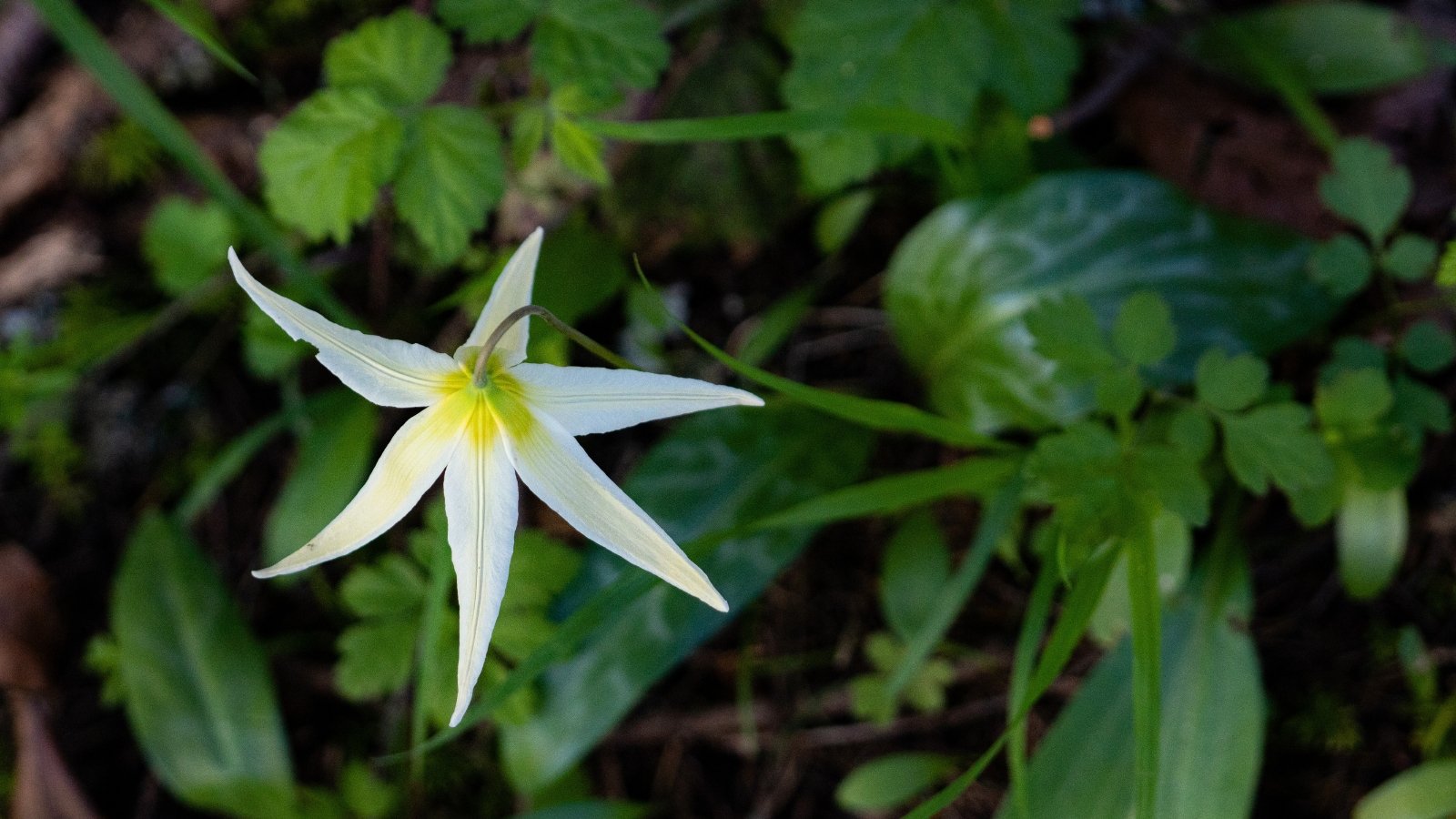
Oregon hosts three main species of fawn lilies, each with different flower colors. Fawn lilies are perennial bulbing plants with two opposite leaves. They create distinct flowers with petals that bend back over time, much like tiger lilies.
Choose from the white or pink species of fawn lilies, or try the yellow-flowered glacier lily. All three are members of the Erythronium genus and prefer similar conditions. Give them Partial shade, ample water, and well-draining soil, and they’ll reward you each spring with bounties of blooms.
Grow fawn lilies from transplants at nurseries or from seeds. Sow seeds in fall and keep them protected and moist until spring. They’ll germinate into baby fawn lilies when the weather warms.
Redwood Violet
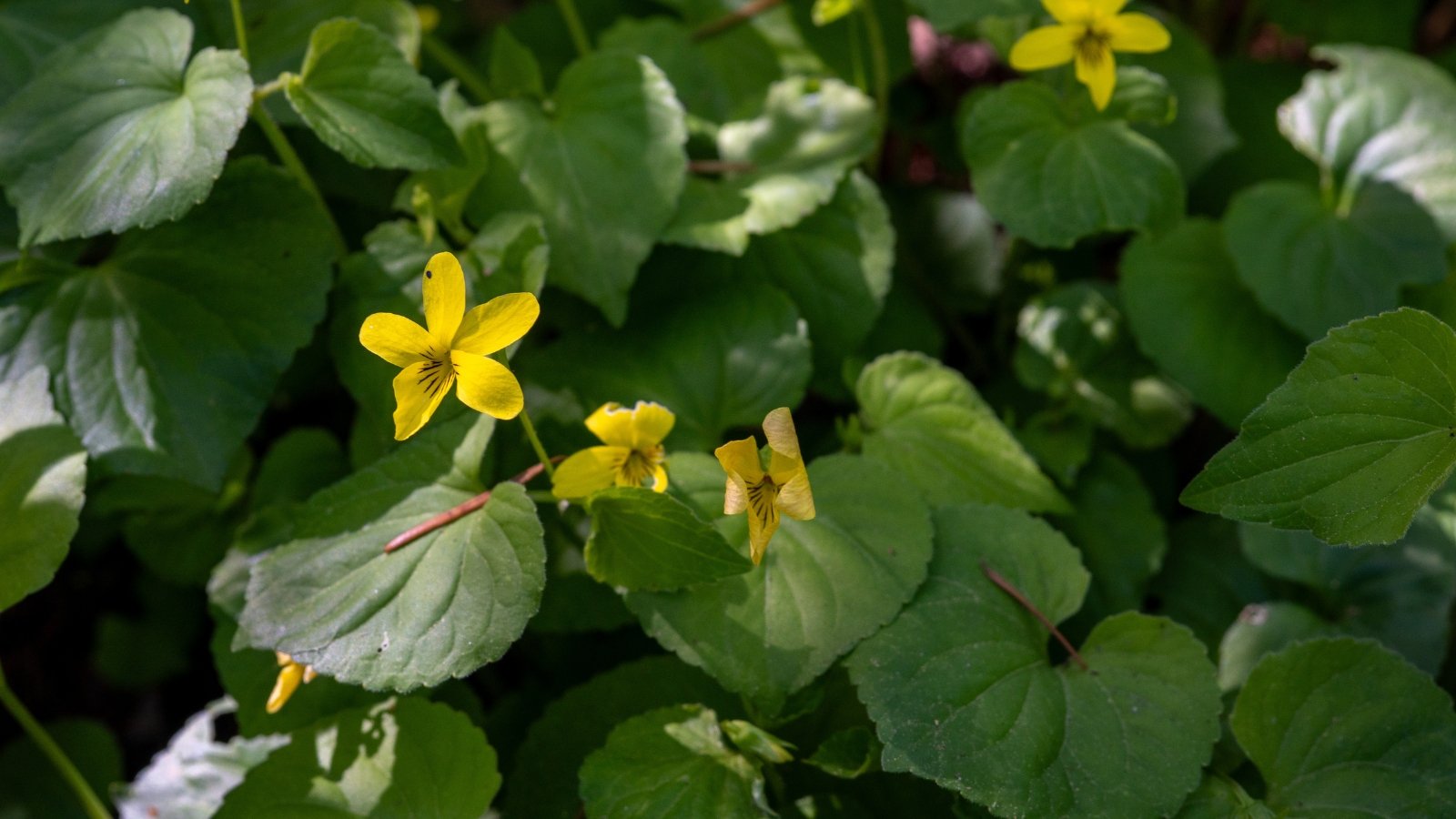
Violets grow the world over, and Oregon has a very special violet called the redwood violet. Also known as the evergreen violet, it sometimes keeps its leaves through the winter and can survive freezing temperatures!
Redwood violets grow yellow flowers above round, deep-green leaves. A perennial, it spreads slowly throughout forest floors and woodland areas. Plant it in your shade garden and watch as it fills new spots.
To grow redwood violet, sow seeds in fall or early spring in a cold frame or mini-greenhouse. Let the seeds overwinter inside in a cool and protected area. Over the winter, seeds sprout, and they’ll grow into seedlings ready for transplanting in early spring.
Trillium
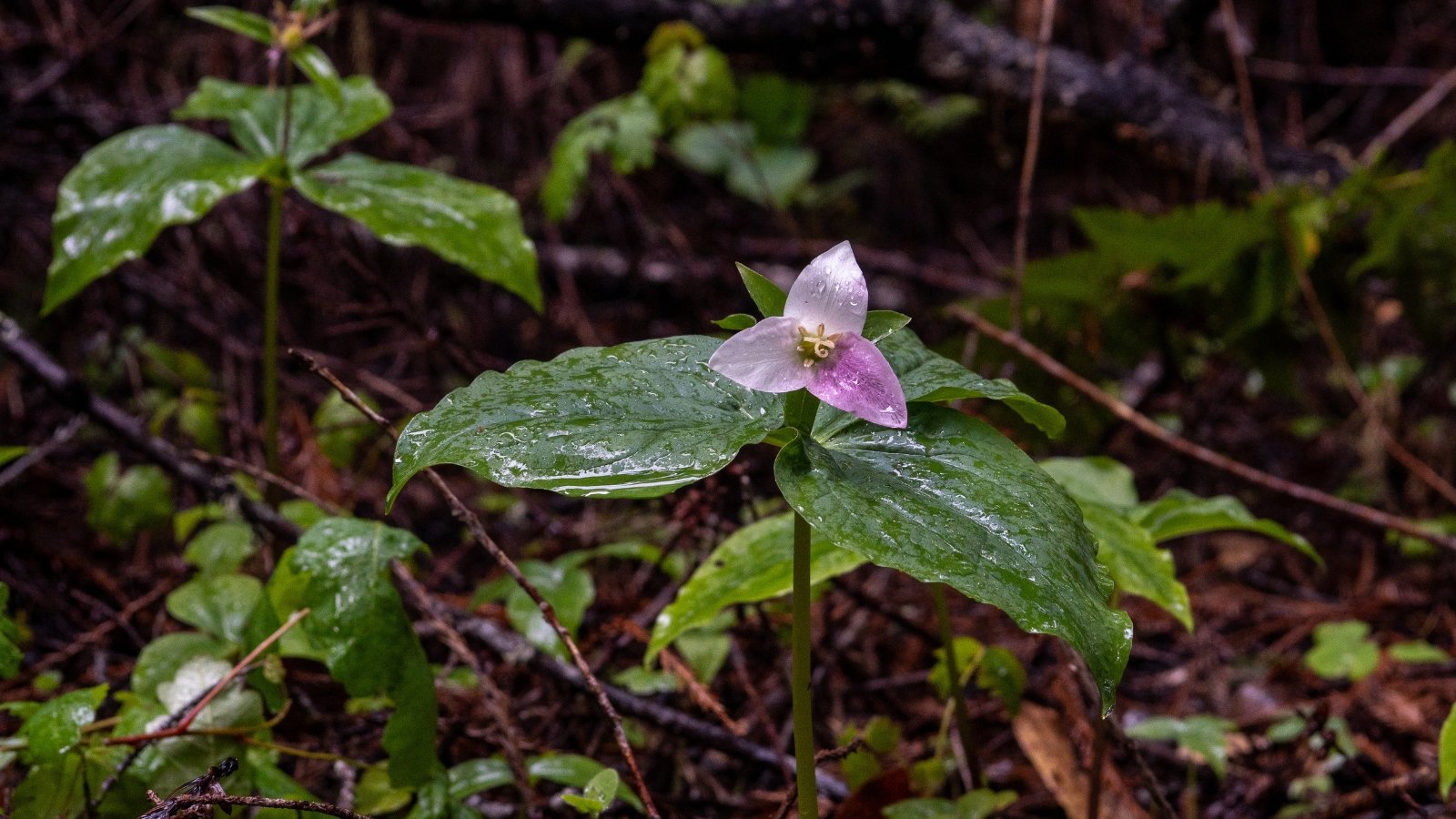
An icon of the Pacific Northwest, trillium grows wild in moist, shady forests and woodlands throughout Oregon. It grows in a characteristic shape, where three oval leaves connect at a central point and a single flower grows out of its center. Flowers range from white to pink, to mahogany!
A few trillium species grow naturally in Oregon. For spotted leaves and creamy flowers, try Trillium albidum, also known as giant white wake robin. The most common in Oregon is Trillium ovatum, with white flowers and velvet green leaves. Idaho trillium, Trillium petiolatum, grows thin green leaves and maroon upright flowers.
To grow trillium, sow seeds in fall and let them overwinter outside. In spring, they’ll sprout into new trillium plants. For transplanting into the garden, buy live plants online or at a local nursery, and plant them in the ground in fall after the bulb has gone dormant.
Redwood Sorrel
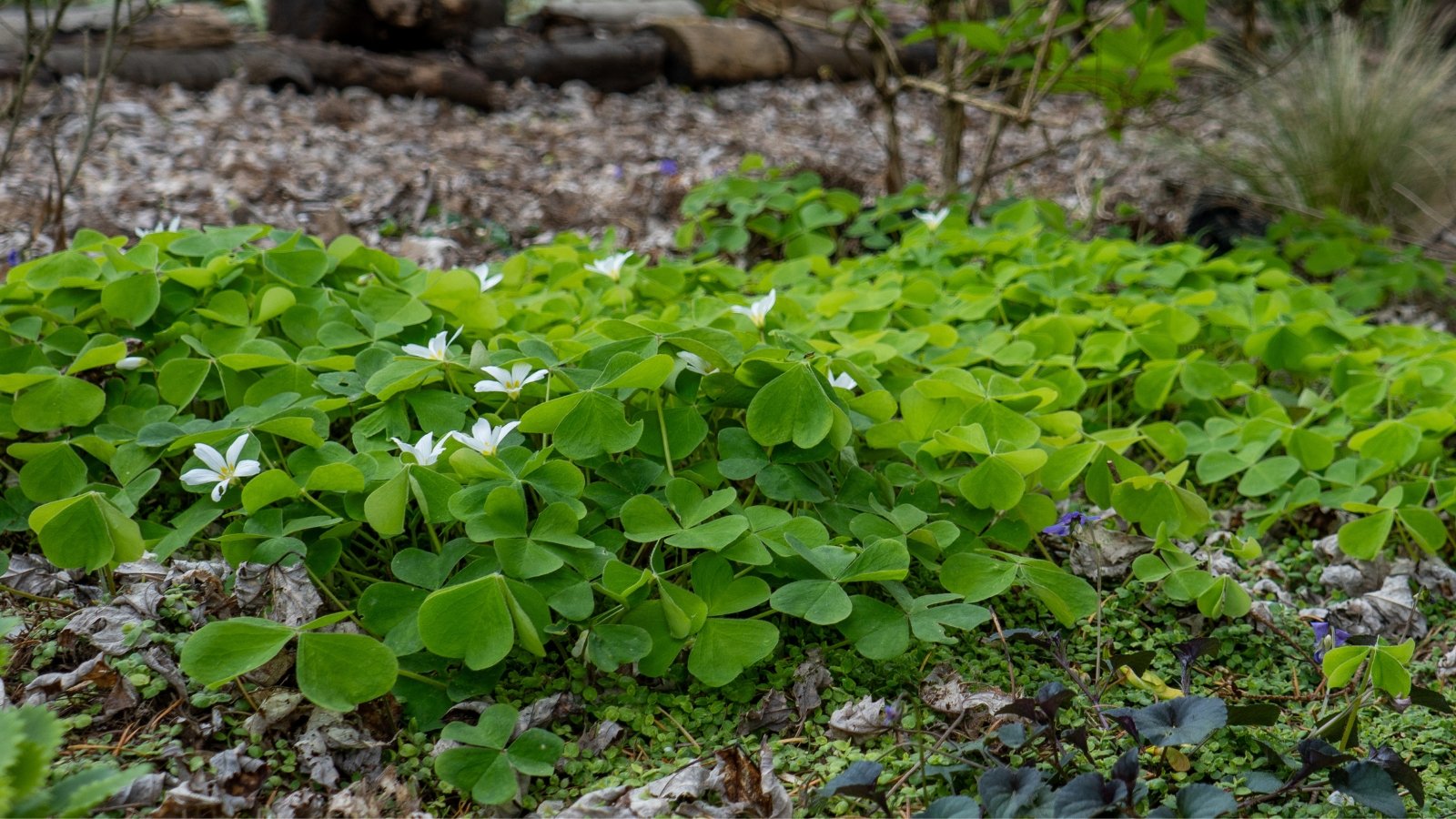
As its name suggests, redwood sorrel loves growing underneath coast redwood trees. It looks like other invasive clovers, but it is an Oregon native and offers beneficial resources to the local ecosystem.
This creeping ground cover sprouts shamrock leaves that are green on the top and sometimes purple on the underside. Flowers range from pink to white, and they have slight vein marks on them. This native prefers shady, moist areas.
Plant redwood sorrel from seeds or transplants in fall. Keep them moist through the winter, and they’ll sprout in springtime when the weather warms.
Pacific Bleeding Heart
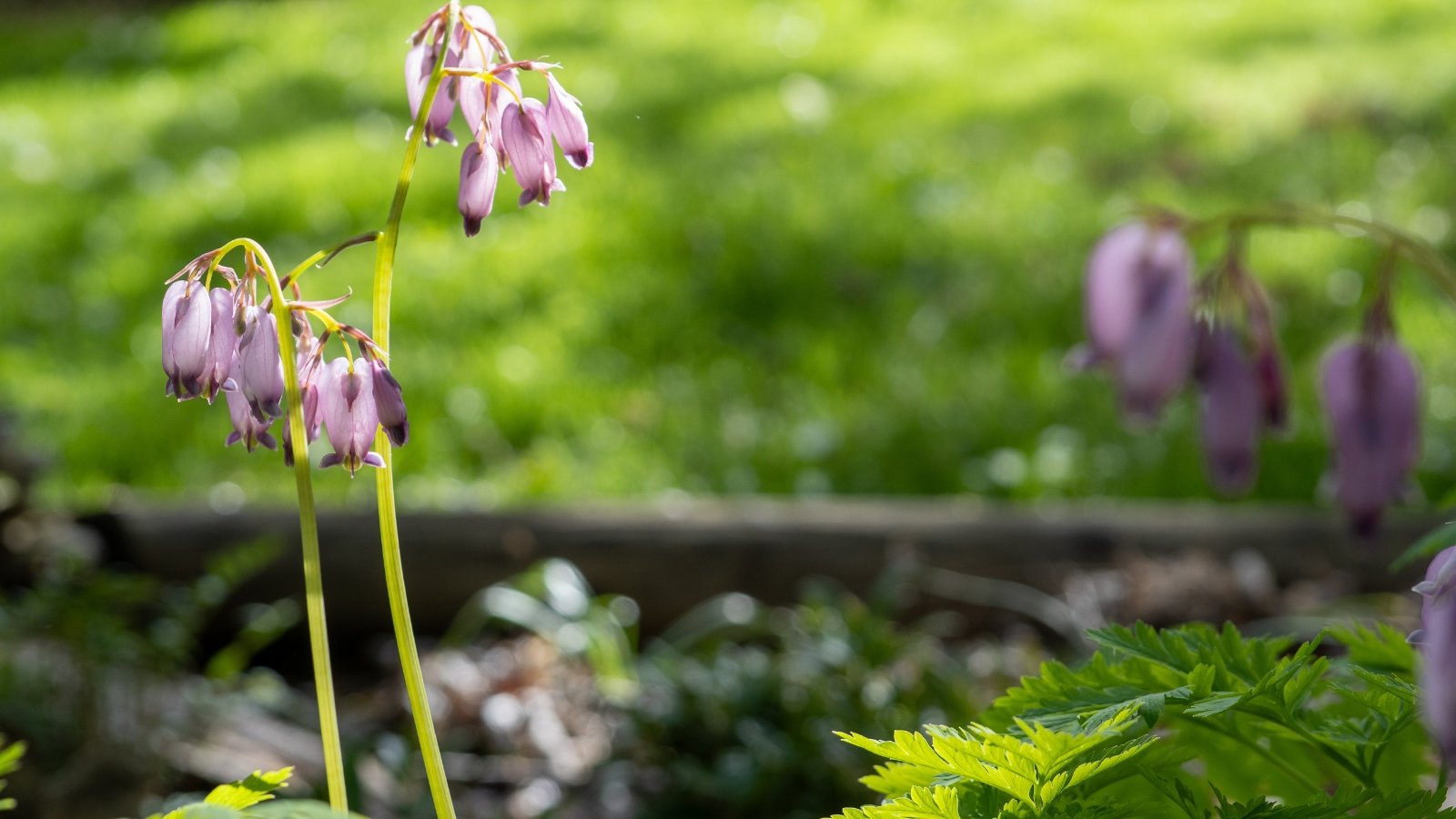
With a name like Pacific bleeding heart, Dicentra formosa is one of the most underrated plants in the Dicentra genus. It resembles the non-native common bleeding heart, but it is smaller, grows lacier foliage, and thrives better in the Pacific Northwest.
These low-growing flowers sprout from rhizomes beneath the soil. The flowers are decadent shades of pink, white, and red, and they form a shape that looks like a bleeding heart. When allowed to roam in the garden, this perennial wows onlookers each spring as it grows from bare dirt and fills empty areas.
Plant seeds or rhizomes in fall in a shady, moist location with good drainage. Ensure the seeds stay moist, and bide your time until spring! They’ll sprout once the weather warms up.
Lanceleaf Spring Beauty
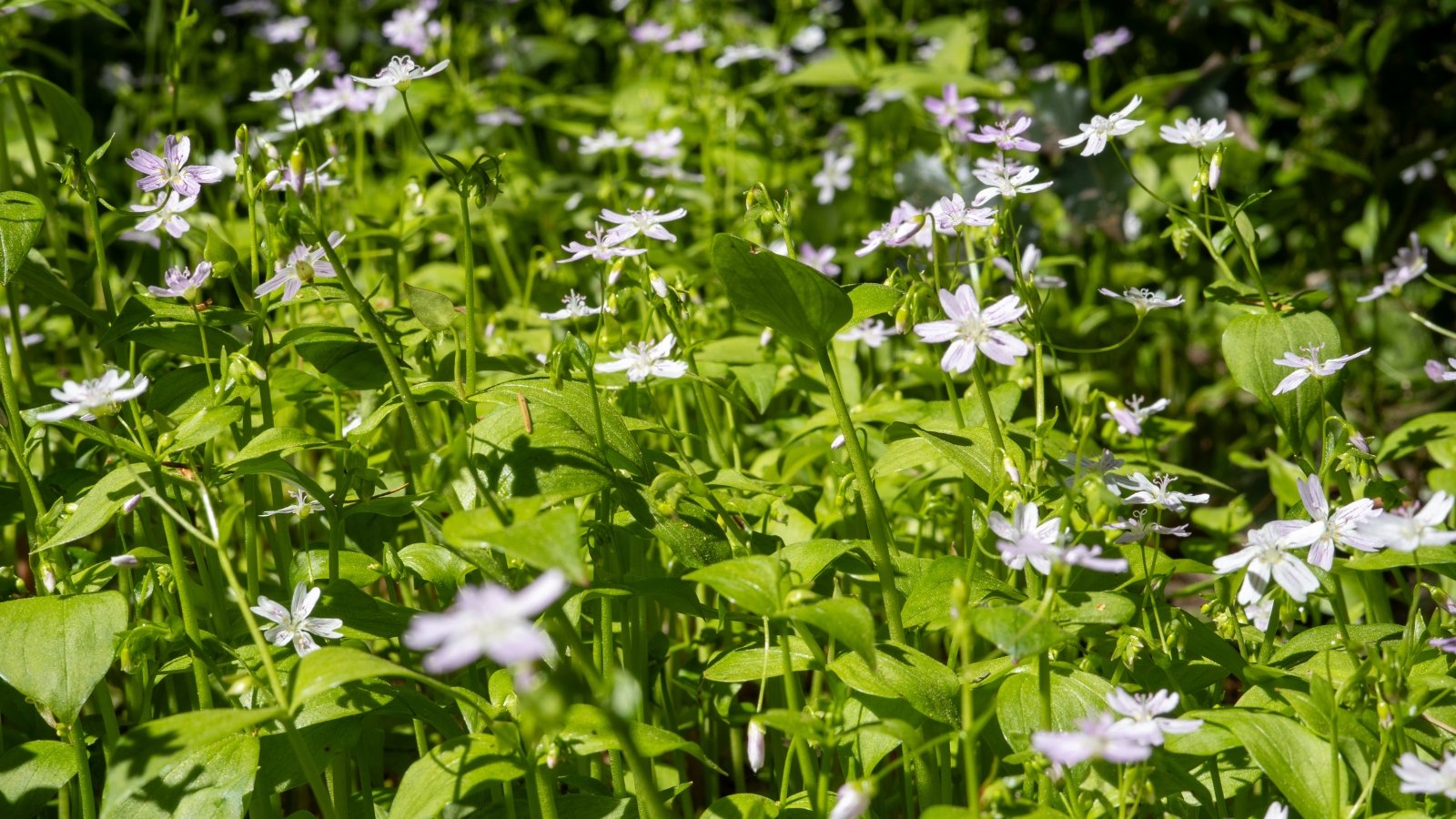
Lanceleaf spring beauty is a delightfully tiny plant with star-shaped flowers. It fills crevices in forests, woodlands, and meadows where the soil is wet during the spring. With reddish-hued green leaves and white flowers with pink veins, this ephemeral native grows from corms buried deep in the soil.
Grow lanceleaf spring beauty from seeds or corms and plant them in fall. Keep the area moist, and both seeds and corms will sprout new growth in early spring. Situate this perennial in a locale with good drainage and regular water during its flowering period.
Baby Blue Eyes
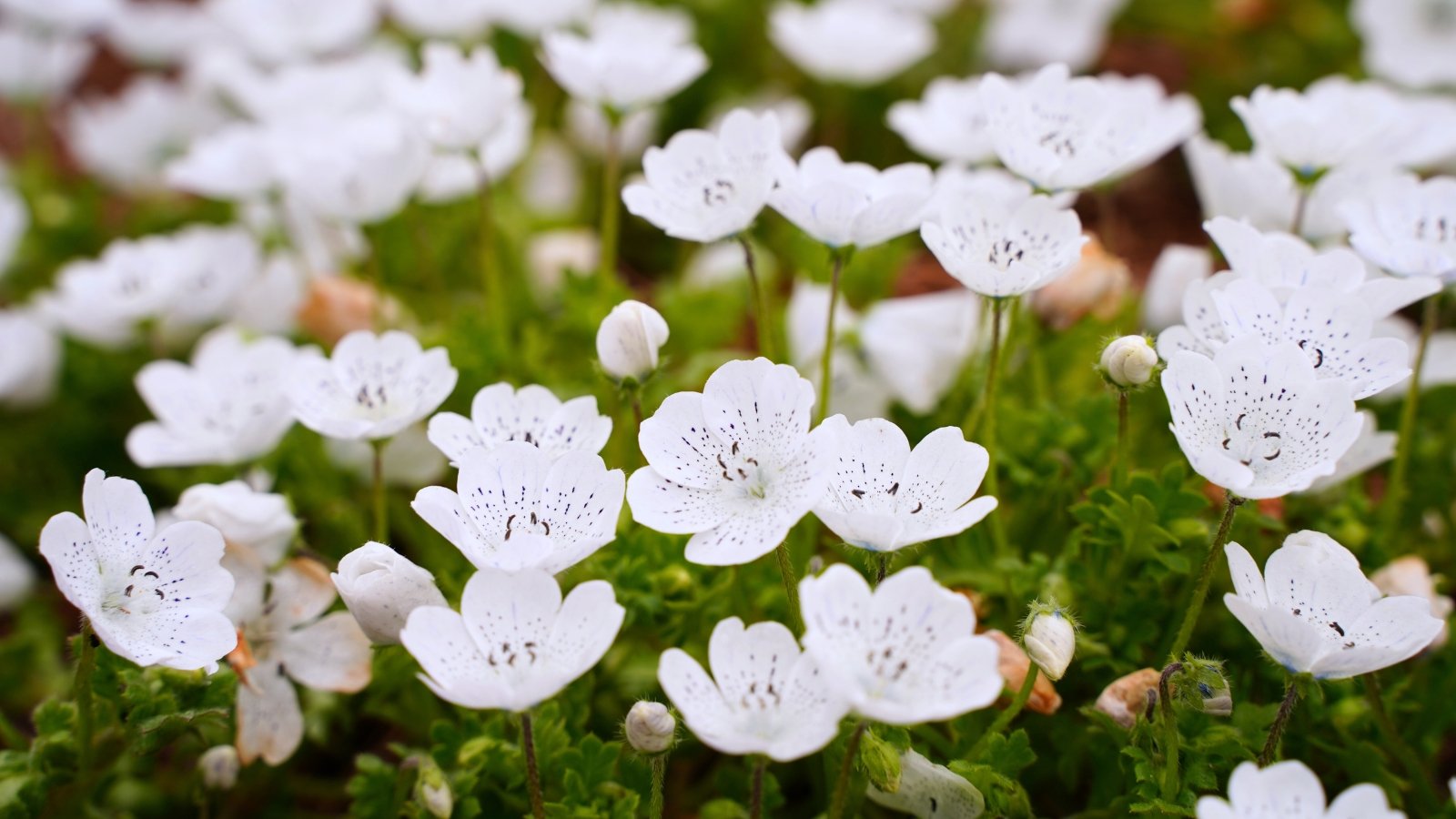
Baby blue eyes typically grow blue flowers, although the Oregon native species grows white ones with black spots! They are native annuals, and they grow wild wherever there is full sun and moist, well-draining soil.
Not only does this native annual blanket hillsides to provide erosion control, but it also produces nectar that is beneficial for native bees and pollinators. Plant baby blue eyes seeds today, and watch as they spread and attract local wildlife into your backyard.
Grow baby blue eyes by planting seeds in fall as soon as they ripen. Sow them in full sun and water them well. Then, wait until spring and watch for baby blue eyes seedlings!
Pacific Houndstongue
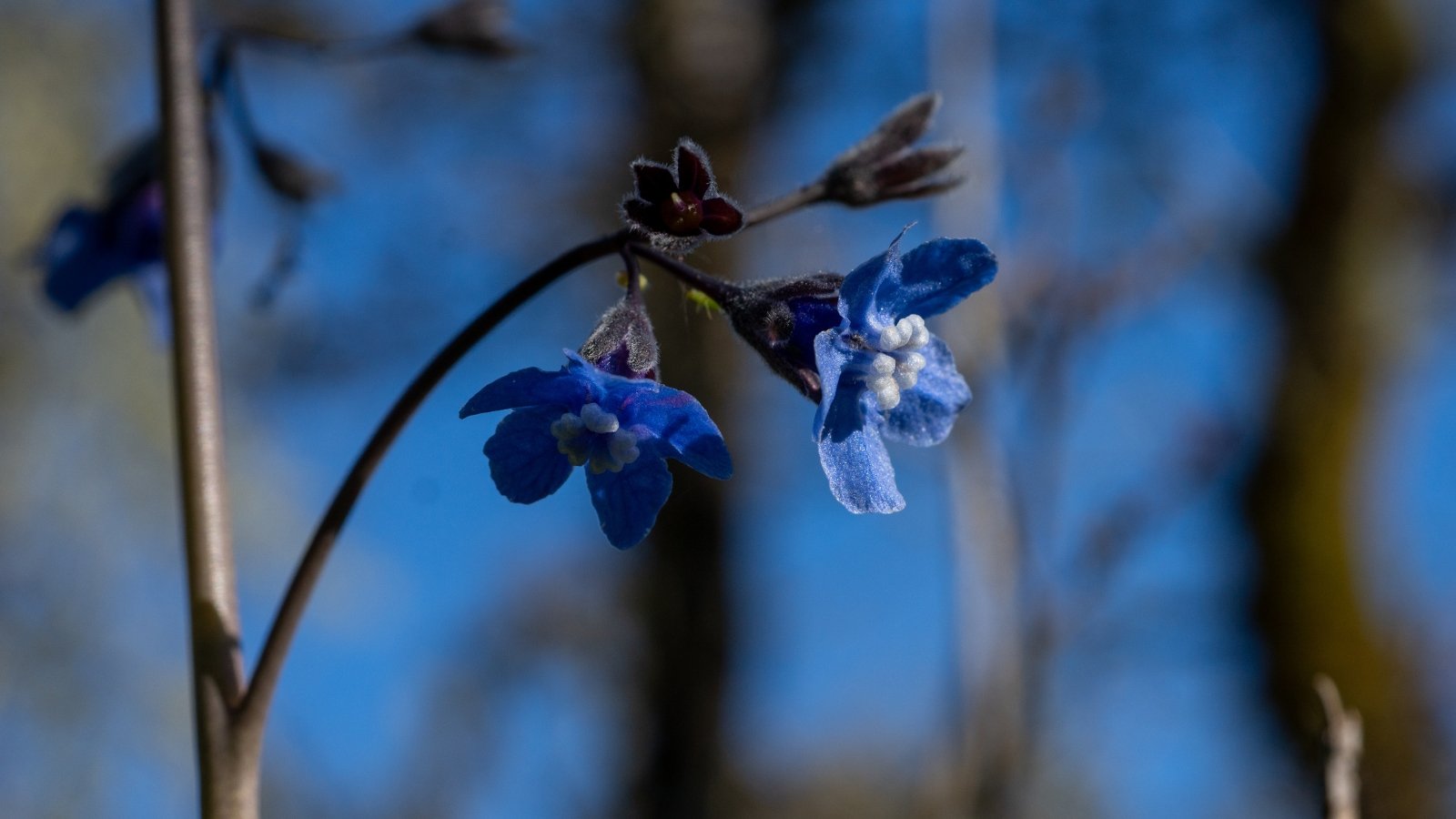
With uniquely colored flowers and oddly shaped seed pods, this perennial native thrives in open woods and meadows across the Pacific Northwest, from British Columbia to California. It sprouts clusters of bright blue and violet flowers. Their blue hue is rare in plants, and it is a special treat to look at.
Formerly known as Cynoglossum grande, this plant’s new scientific name is Adelinia grande. It thrives alongside baby blue eyes, toughleaf iris, and oak trees.
To grow Pacific houndstongue, plant seeds in the fall after the rough-textured seed pods ripen. Keep the seeds moist, and they’ll germinate in early spring.
Western Buttercup
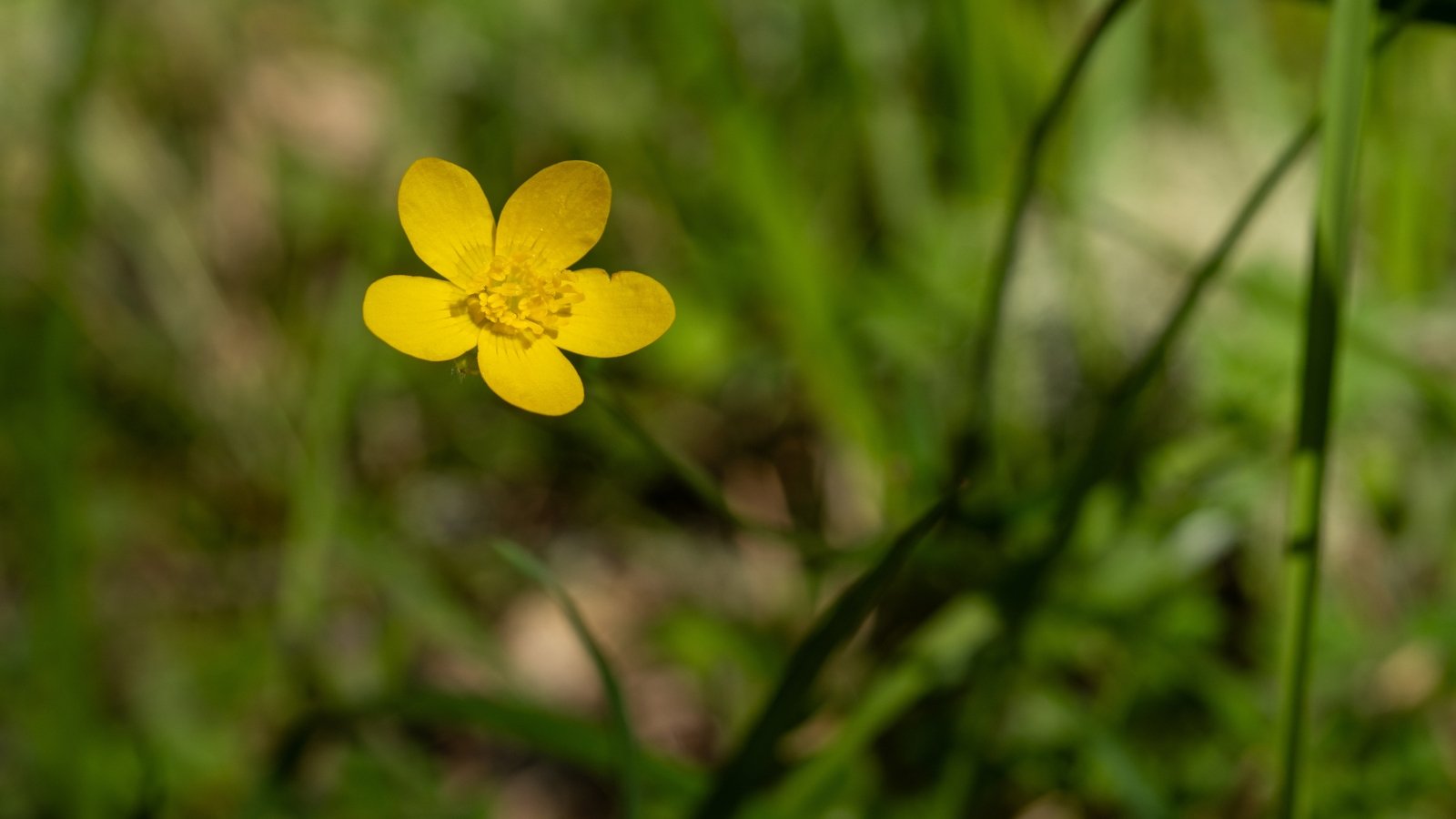
Opt for native buttercups in place of non-native invasive ones! The Western buttercup is a delightfully small perennial with yellow flowers. Each flower has five petals and a bundle of yellow anthers and stigmas. Plant it en masse in meadows with camas and native grasses for a stunning early spring wildflower display.
Western buttercup thrives in full sun to partial shade locales and prefers regular water during the growing season. They spread underground and by seed and fill in bare areas of gardens and parks where they thrive.
To grow Western buttercups, plant seeds in the fall so they undergo cold stratification during the winter. In the spring, when the weather warms, the seedlings quickly grow into mature plants.
Fringe Cups

When walking in the forest, you may pass by fringe cups without seeing them! They resemble heucheras and grow small green flowers that look like seed pods. If you get low to the ground and look up, you’ll see the special markings on the flowers that make this native plant a must-have in the shade garden.
Fringe cups grow well with dappled shade, ample moisture, and fertile soil. They grow in forests and woodlands throughout the West Coast.
Grow fringe cups from seed, as they are extremely easy to sprout, and they reseed rapidly. Sow seeds in fall, and watch for them to germinate in spring.
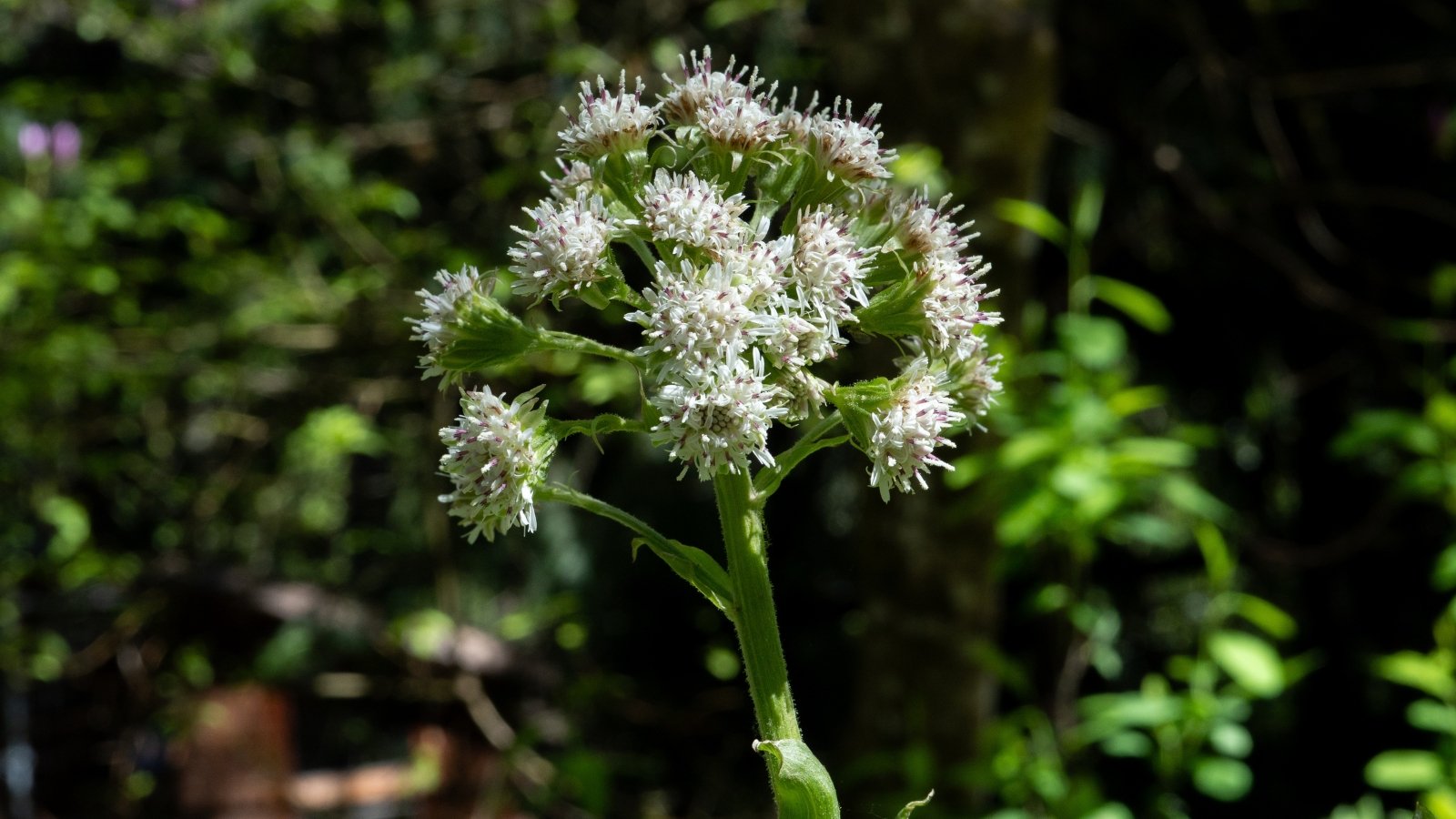
Like the non-native invasive coltsfoots, Western coltsfoot spreads easily in wet, boggy areas. It colonizes the soil with rhizomes, and it spreads seeds each year that create new plants. Western coltsfoot is a lovely native with large, dissected foliage and clusters of purplish-white flowers.
This native perennial thrives under dappled shade, sitting water, and fertile soil. Swamps, wet forests, and shady meadows are perfect for letting it grow and spread.
Grow Western coltsfoot from seeds or rhizomes and plant both in the fall. After overwintering, they’ll sprout and creep into new areas of your garden.
Mariposa Lily
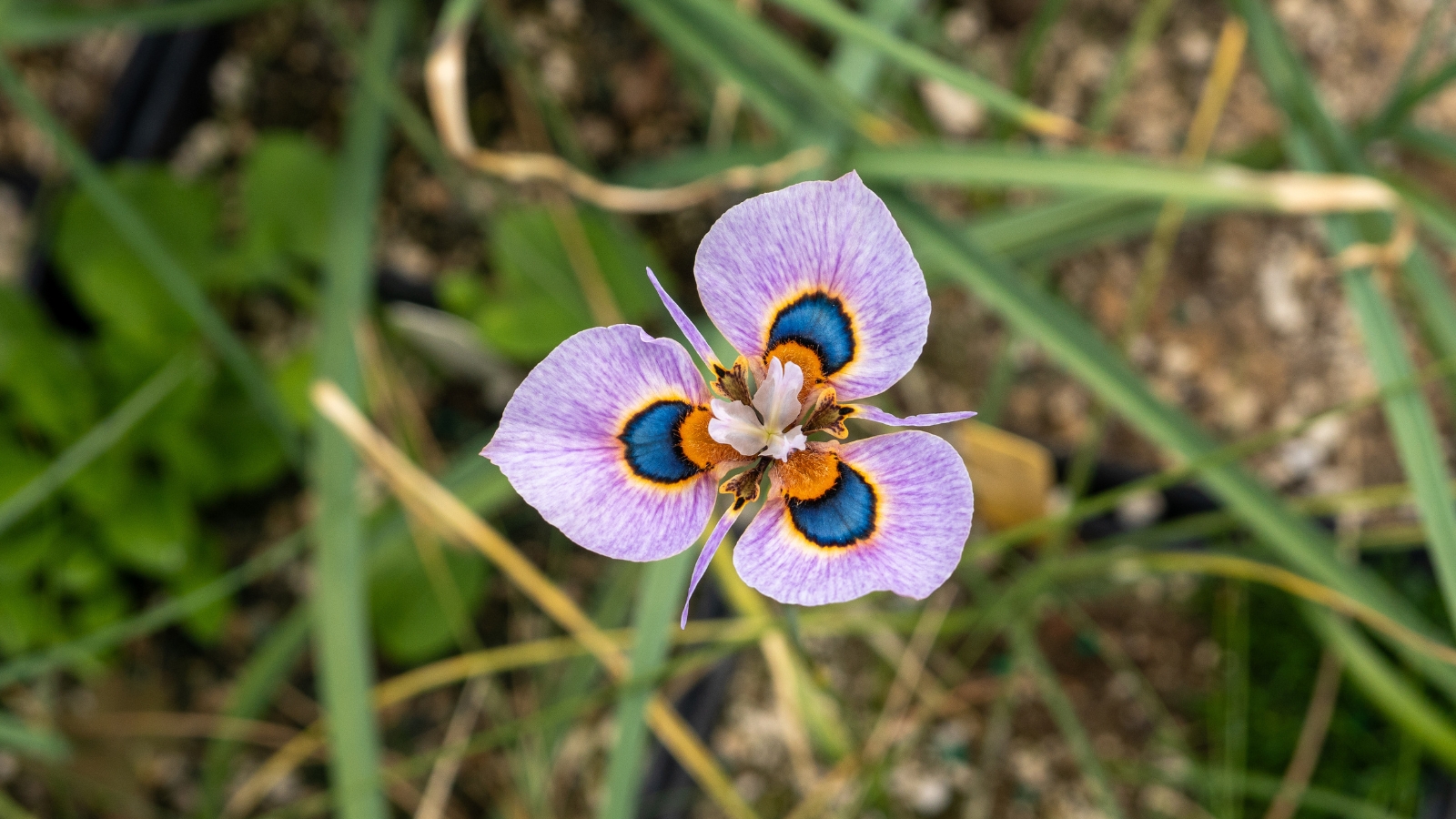
Not only do these natives delight hikers and travelers in wild spaces, but they also are a favorite of rock gardeners throughout North America! With fuzzy insides that contrast in color with the outer petals, this perennial’s flowers stun viewers each spring, and they attract local pollinators.
Although gorgeous, this native requires more care than the non-native lilies commonly grown in gardens worldwide. Mariposa lilies thrive in extreme ecosystems, where there is full sun, rocky soil, and harsh cold in the winter.
To grow mariposa lilies successfully, plant seeds in rocky and gritty soil where they’ll have cool roots, like in a crevice or crack. Ensure they’ll have lots of sunlight in summer and low precipitation in the winter.
Oregon Geranium
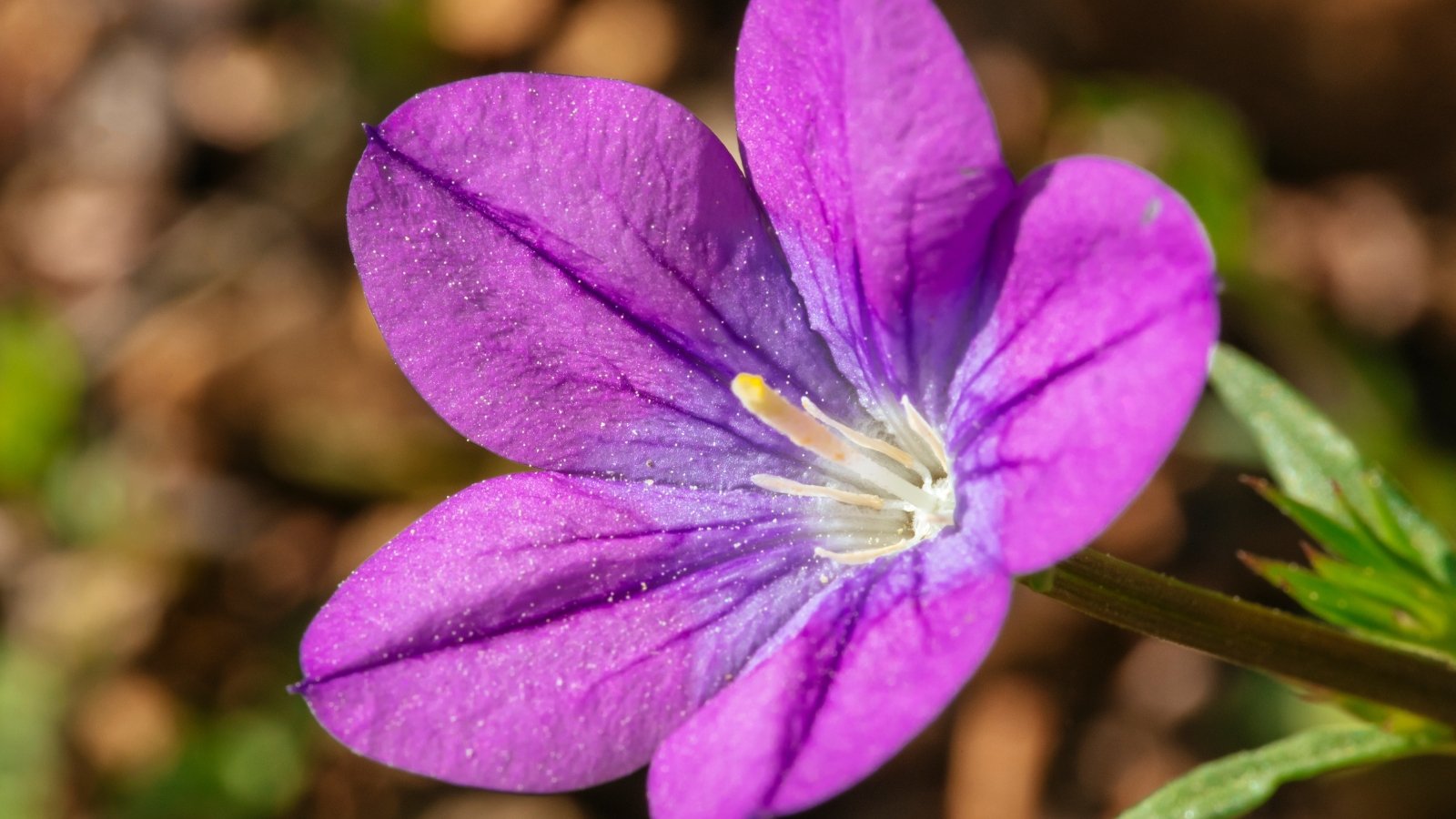
Oregon geraniums are native to the western side of Oregon, west of the Cascades. They grow hot pink flowers on divided green foliage, and they spread over time to make a low-growing ground cover. Wilder than most garden geraniums sold at nurseries, this plant performs well when given lots of space to roam free.
Sow Oregon geranium seeds in the fall, and they’ll undergo cold stratification during the winter. Then, in the spring, the seeds germinate into lovely little geranium plants. This native prefers Full sun to partial shade and average soil— it grows successfully in all parts of Oregon when it receives this care.
Douglas’ Aster
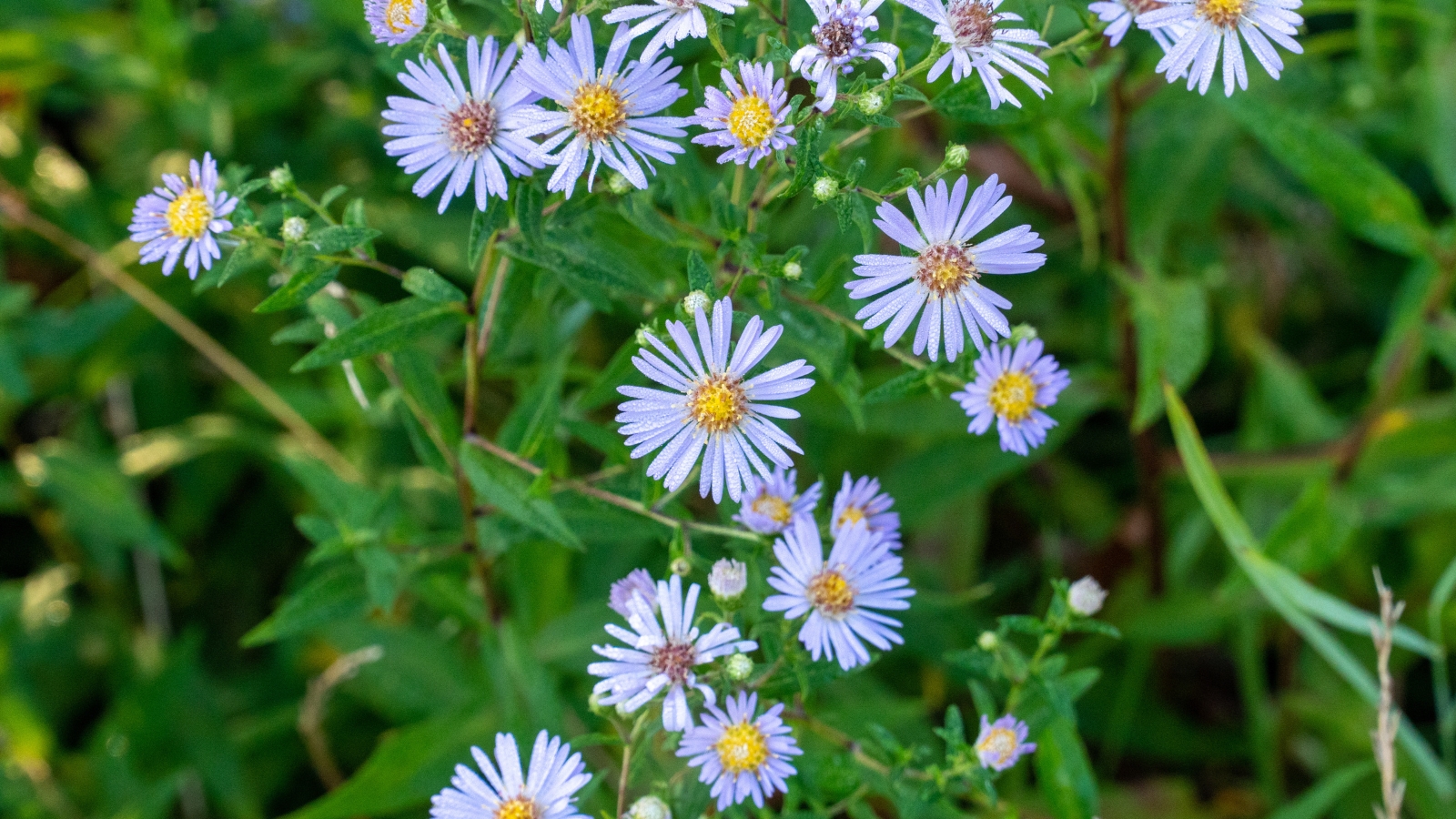
A perennial wildflower with character, Douglas’ aster stands out in the landscape. It sprouts purple petalled flowers with yellow centers that resemble daisy flowers. This Oregon native is a must-have plant in moist and sunny areas.
Each year Douglas’ asters creep along the ground and spread their rhizome. They die back in the fall and winter and sprout anew during the springtime. They bloom in late summer when most other plants have already finished flowering and are a welcome sight in meadows, clearings, and sandy coastlines across Oregon.
Grow Douglas’ aster from seed. Collect seed pods in the late fall and wintertime after the flowers form dry seed pods. Collect seeds and sow them in full sun where the soil has good drainage. They’ll cold stratify in the winter and sprout in the spring!
Cow Parsnip
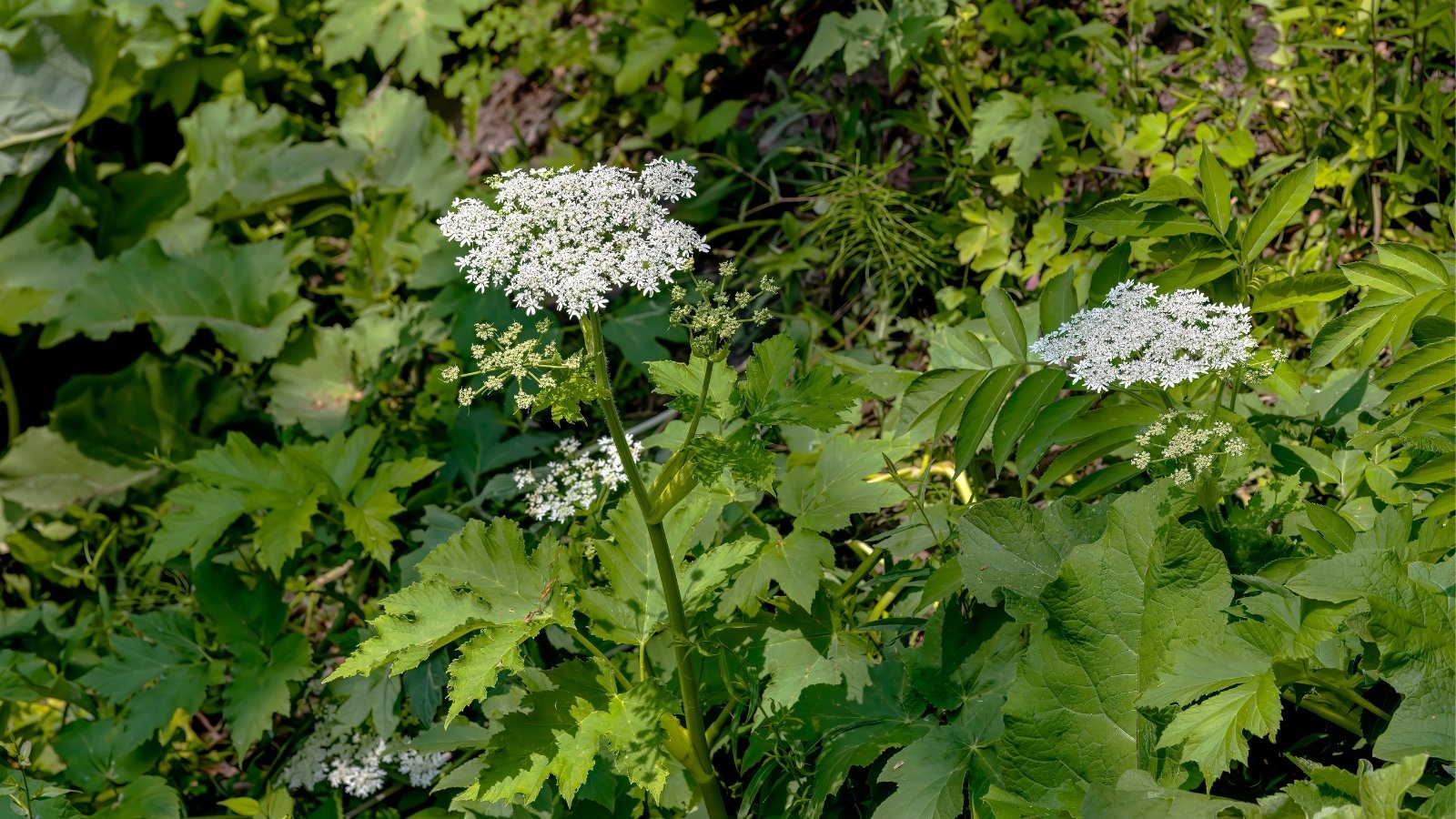
Often confused for the noxious weed giant hogweed, cow parsnip has giant green leaves and huge clusters of white carrot-like flowers. This native’s scientific name Heracleum maximum reflects the plant’s gigantic nature, as it grows to a maximum height of 15 feet!
Be careful when handling this plant, as the stems have materials that cause rashes on light-sensitive people. It also looks similar to giant hogweed and poison hemlocks, so I recommend using caution when identifying this native in the wild.
This biennial loves moist, boggy areas and performs well where there is sun and water. To grow it, sow seeds in the fall or winter once temperatures have cooled and moisture arrives. Let the seeds overwinter and sprout new cow parsnip plants in mid-spring.
Final Thoughts
Oregon is my home, and I feel incredibly lucky to live near so many gorgeous native wildflowers. Native species adapt to the local climate, offer plentiful local resources, and add color and structure to wild landscapes.
Plant one of these natives today and invite Oregon into your backyard. These plants thrive wherever conditions match their points of origin. Adapt your landscape for them, and they’ll continue providing flowers for you year after year.


